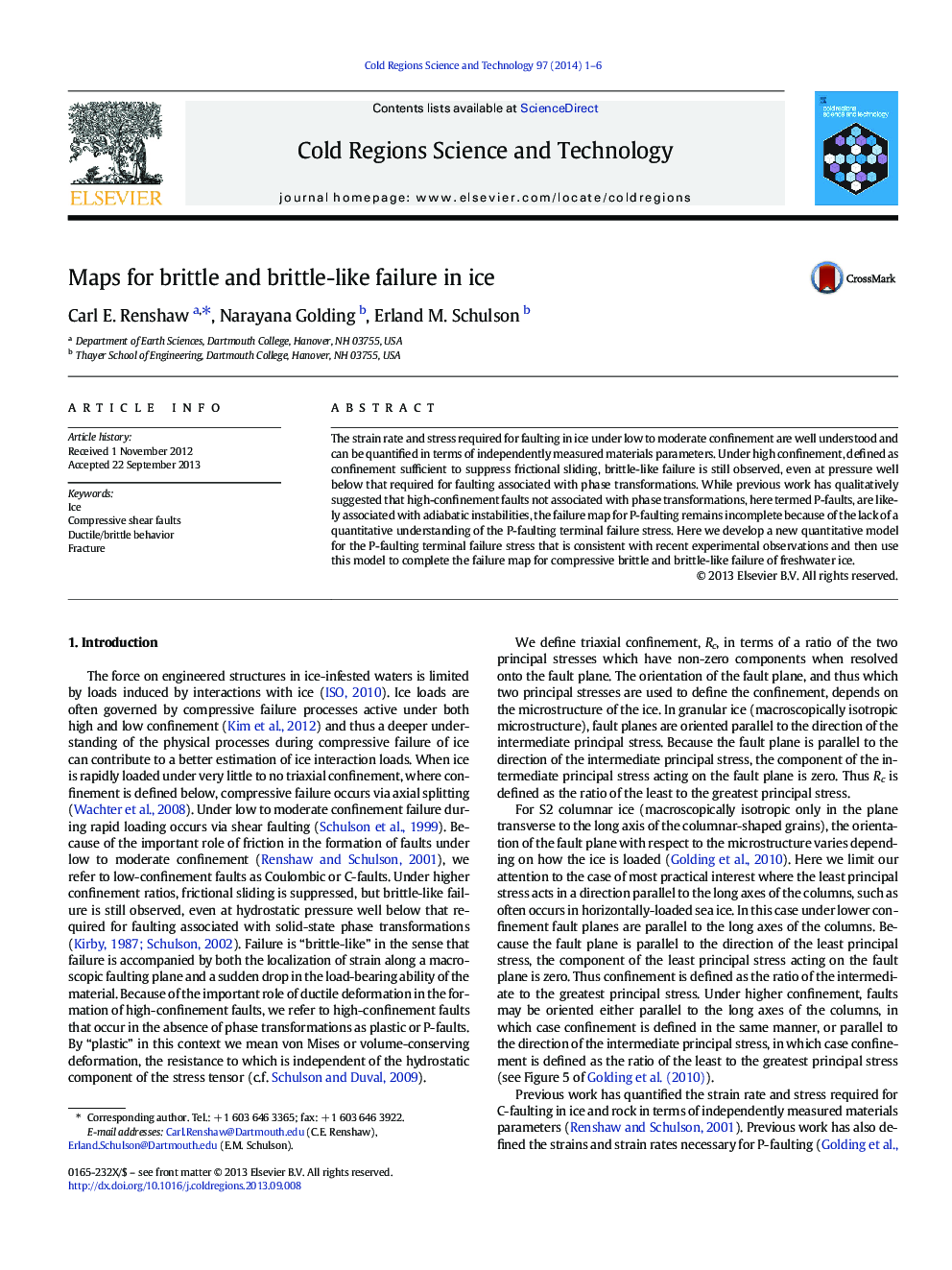| Article ID | Journal | Published Year | Pages | File Type |
|---|---|---|---|---|
| 6426937 | Cold Regions Science and Technology | 2014 | 6 Pages |
â¢Ice forces acting on engineered structures depend on the mode of failure.â¢The degree of confinement varies in the contact zone and impacts failure mode.â¢Under high confinement adiabatic instability can lead to brittle-like failure.â¢A new model gives the failure stress for failure under high confinement.â¢New model completes the compressive failure mode map for freshwater ice.
The strain rate and stress required for faulting in ice under low to moderate confinement are well understood and can be quantified in terms of independently measured materials parameters. Under high confinement, defined as confinement sufficient to suppress frictional sliding, brittle-like failure is still observed, even at pressure well below that required for faulting associated with phase transformations. While previous work has qualitatively suggested that high-confinement faults not associated with phase transformations, here termed P-faults, are likely associated with adiabatic instabilities, the failure map for P-faulting remains incomplete because of the lack of a quantitative understanding of the P-faulting terminal failure stress. Here we develop a new quantitative model for the P-faulting terminal failure stress that is consistent with recent experimental observations and then use this model to complete the failure map for compressive brittle and brittle-like failure of freshwater ice.
